Some of the links in this post are affiliate links. This means if you click on the link and purchase the item, I may receive an affiliate commission at no extra cost to you.
When in China, a day trip to the Dujiangyan Panda Base and Dujiangyan Irrigation System isn’t normally on the agenda for most people. Most travelers to China tend to stick to the eastside and visit the main tourist hot-spots of Xi’an (Terracotta Warriors), Beijing (Great Wall, Tiananmen Square), and Shanghai (The Bund).
While these attractions do symbolize the exotic land which is China, there is something just as interesting which tends to get overlooked occasionally, and that is the Panda! The panda is quintessential China, especially the giant panda.
Read on as we’ll explain how we went to the best place in China to see giant pandas, and even squeezing in a quick mountain view from an ancient temple to boot. We managed to see both of these attractions in one day thanks to this Chengdu panda tour, as well as escape from the hot Chengdu heat in a private air conditioned car.
The tour I took is no longer advertised, but this tour is pretty much the exact same trip I did, so have a look here. When booking, you will have to scroll down to find the Dujiangyan option.
Chengdu Travel Tips: Quick Info

- Currency: Chinese Yuan (rmb)
- Electricity: Generally 220v. A straight two pronged plug is most popularly used, however occasionally you’ll find a three pronged plug (much like Australian). Bring an adapter like this one here on Amazon.
- Language: Mandarin is commonly spoken in China.
- Visa: Most nations need a pre-arranged visa for China.
- Safety: China is generally very safe, with most citizens being very well behaved. I didn’t feel unsafe at all in Chengdu, and taxi drivers seemed to be honest. Please note it is common in China for taxi drivers to pick up multiple passengers, if you don’t want this wave your hands frantically and say no if they pull over to let someone in.
- Weather: Chengdu gets extremely hot in summer so make sure you pick up a fan if visiting between June and September. Chengdu in winter is cold, but not as cold as it is in Beijing. Rains are the heaviest in July and August. Spring time, or autumn would be the best time to visit.
- Transport: Buses and trains (book on Ctrip) for the intrepid. Didi (similar to Uber) if you read or speak Chinese. Taxis are cheap (don’t need to speak Chinese, but have addresses written in Chinese characters – ask hotel staff or screenshot from internet). Day tours can also be a cheap way to see multiple sites.
- Recommended gear:
- Camera: While not everyone can afford it, I found I got the best pictures with my SLR and 70-200mm zoom lense. You can get some pretty SLR + Lens combos like this one here.
- Handheld fan if visiting in summer,
- jacket if visiting in winter,
- plug adapter,
- comfortable walking shoes,
- Mandarin phrasebook (if all else fails you can point to phrases – chances are they wont understand your pronunciation attempts)
- Lonely planet China (see prices here)
Visiting Chengdu – The Panda Capital of China
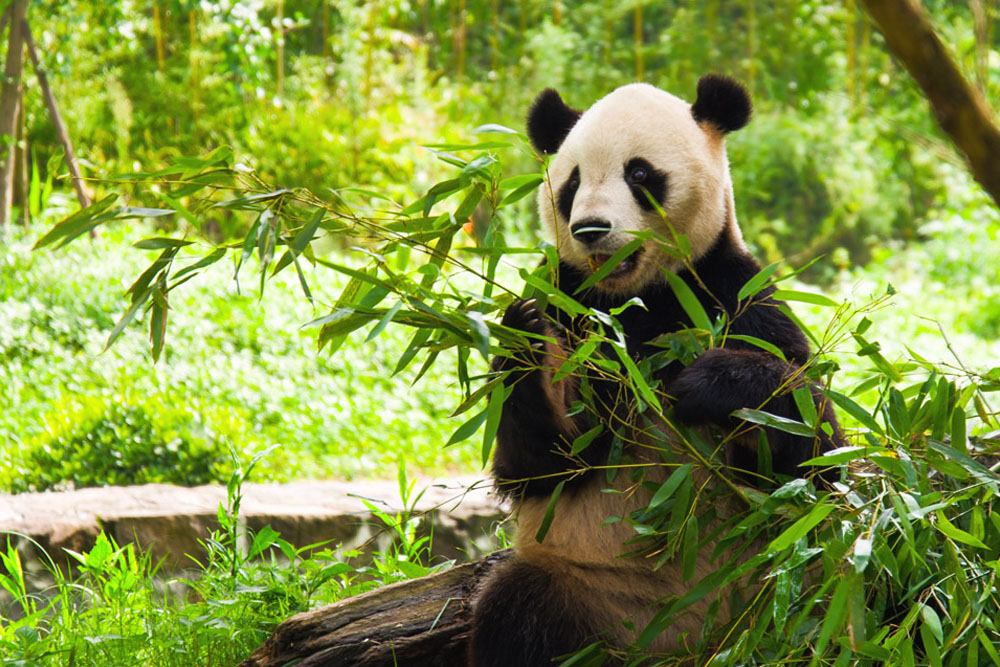
If you’re wanting to get the full the panda experience when in China, than Chengdu is the place you need to go to. Chengdu is home to several panda research centers, with one of the biggest being the Dujiangyan Panda Base in, you guessed it – Dujiangyan.
The base is about an hours drive from Chengdu and is otherwise known as the China Conservation and Research Centre for the Giant Panda (CCRCGP). Visiting Dujiangyan Giant Panda Base is the easiest Chengdu panda tour option there is.
Chengdu and the town which the panda base is situated in, Dujiangyan, all seem to embrace the panda. Each town is littered with panda memorabilia, while even some taxi’s have been painted to look like pandas. It’s actually quite funny and charming to see.
Chengdu isn’t an overly large city when compared to Beijing and Shanghai, though that’s not to say that Chengdu is small since it still has an urban population of 10 million.
One of the great things about Chengdu is that there is a metro available throughout the city, which makes getting around town all that much easier. Chengdu, but more particularly the Sichuan province is quite famous within China for it’s food.
The majority of Chinese dishes are based off of Sichuan dishes (learn how to cook them here). Another thing to be weary of is that while Sichuan food is incredibly tasty and quite simply amazing, it is also synonymous for being quite hot and spicy.
So you have been warned.
Dujiangyan Panda Base, Dujiangyan
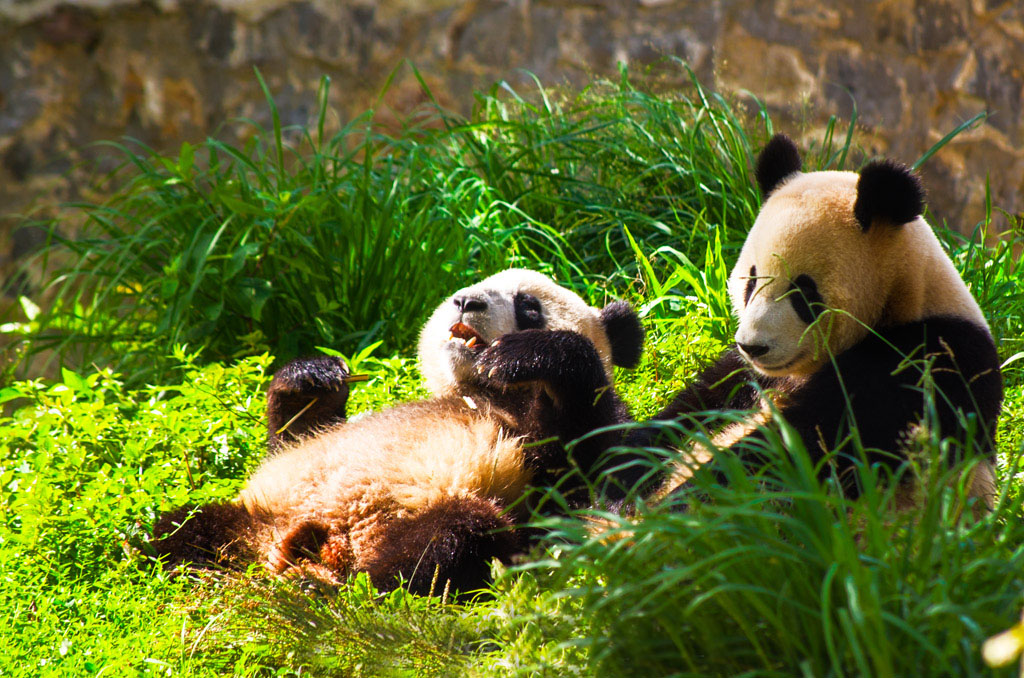
For our Chengdu panda tour to the Dujiangyan Panda Center we had a private tour, which is something that we’d strongly recommend. We had our guide all to ourselves, and he was extremely informative not only on the sights of the tours, but on China as a whole.
The Giant Panda Protection and Research Centre opened in 1983 and has since developed into one of the biggest giant panda research centres in the world.
The research centre is home to around 20 giant pandas, while there are approximately 25 giant pandas currently being loaned out from the research centre to zoos around the world. Most recently one of the giant pandas by the name of Tarzan was loaned to feature in the movie Tarzan (2016), thus that’s where the panda gained his name.
The research center takes excellent care of their enclosures, with the enclosures themselves replicating the natural surroundings and environment in which pandas would encounter in the wild. Visitor-wise, the Dujiangyan Giant Panda Base is rather quiet compared to other pandas centers, which see the bulk of tourists.
This is perfect since this means you can explore the giant panda research base a little more freely as you’re not bogged down from tourists at every corner. Another reason why this is the best Chengdu panda tour option when visiting China.
It is possible to quickly make your way around the panda base in 1 and half to 2 hours, however you may feel as though things are slightly rushed a little, so I’d recommend at least 3 – 4 hours. The best time of day to arrive at the research center is around is in the morning around 8:30am, as at 9am the pandas are fed.
The pandas are most active during feeding times, so by arriving early at the Dujiangyan Giant Panda Centre you give yourself the best possible chance of a great vantage point. This way you wont miss any amazing photo opportunities just in case the pandas are fed a tad earlier.
It should also be mentioned that during the summer months the pandas aren’t as active since it can become quite warm and humid, between 30 – 35 °C (86 – 95 °F). When we visited which was in late July (middle of summer), the humidity was reaching 100% and temperatures were reaching close to 30 °C by early morning.
As a result of the heat the pandas tend to stay inside to help protect themselves from the draining and energy sapping sun.
The Tour – Seeing Pandas In Chengdu
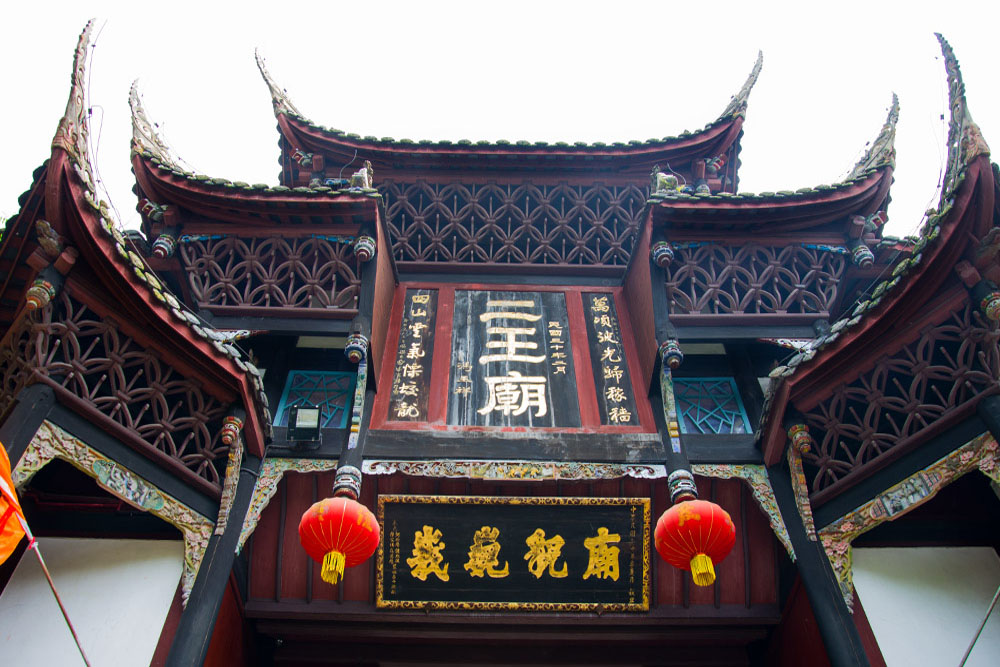
It was a private tour, so it was simply our guide Jason, my friend and I which was perfect. Jason helped maneuver us around the park and showed use the best sites of the research center, while giving us informative information about each cute cuddly panda we came across.
It was a great experience being guided around the research centre as it gives you a slight sense of feeling like a VIP.
Due to it being a private Chengdu panda tour (not sharing the guide with others) we were able to get a little closer to some of the panda enclosures, and we were able to view how some of the closures are maintained.
Something which was rather interesting was that during hot weather, in order to help the pandas cool down and relax, the keepers give the giant pandas a giant cube of ice. The pandas usually sit on the ice to help them cool down a little. Though at other times they tried licking, biting, or playing with the ice which was rather amusing to watch.
While the sole reason for most tourists to visit the research center is to see a giant panda, Dujiangyan Panda Base is also home to several red pandas. While the giant panda is solely native to China, the red panda is from South West China and the Himalayan Region.
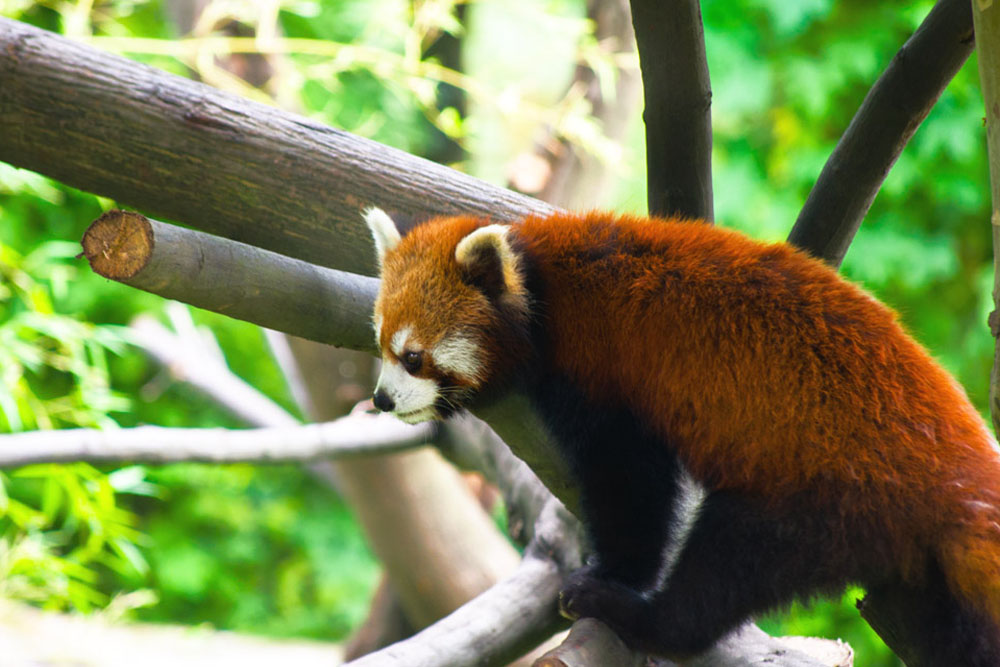
The red panda looks less like a bear, as does the giant panda and shares more of a resemblance to a raccoon. According to our guide Jason, the red panda originally owned the name panda.
Which meant that when people referred to a panda, they were referring to the red panda. Since the red panda eats bamboo, and when the giant panda was discovered the name of panda was also used to name the giant panda.
Essentially the word panda was is an umbrella term used for an animal which eats bamboo.
As a bonus you don’t need to think about anything on the tour which is great. You’re picked up from your hotel, driven to the research centre in a nice luxurious car with air conditioning, which is a god send on a hot humid Chengdu day.

Lunch is included, which were several traditional Sichuan dishes, and very delicious.
It should be noted that while you do manage to get close to pandas, you won’t be able to touch or feed them. If you’re interested in touching or feeding giant pandas than you should look in the volunteering options which allow you to feed, and touch the giant pandas.
In return for the research centre allowing you to get close to the pandas, you’ll need to help clean some of the cages and help maintain some of the research centre which is rather easy work for the return that you get.
Dujiangyan Irrigation System – Mountain Views

Now, now, this does sound just a tad bit boring, the word ‘irrigation’ doesn’t immediately ignite inspiration. But in all honesty I was pleasantly surprised as I enjoyed visiting this site a lot more than I originally had anticipated.
The Dujiangyan Irrigation System is a UNESCO world heritage listed site which runs through a valley at the base of Mount Yulei and Mount Qingcheng, with the latter being the birthplace of Taoisim.
The views from the temples on Mount Yulei and Qingcheng are quite nice, as you’re able to gain a birds eye view of the entire valley which is quite stunning.
From the vantage points on either mountain it’s a little hard to gauge the strength of the rushing water passing through the valley below. But thankfully for you there is an old fashioned wooden bridge at the base which is held together with rope to help you cross the river.
When walking across the bridge it tends to sway a little, so when cautiously walking across try to be a sensible and have both hands free as it can become easy to loose your balance. Obviously we took our own advice and we weren’t trying to vlog, take photos, and eat an ice-cream all at the same time while trying to cross the bridge. *Cough*.
If you’re a history buff Mount Qingcheng and the Dujiangyan irrigation project are great places to visit. I found this to be more interesting than visiting the Terracotta Warriors in Xi’an which were a little underwhelming in my opinion.
Around 270 BC Li Bing a Chinese engineer helped oversea and construct an irrigation system which is still currently in use to this day. The irrigation system uses natural topographic features to help divert water from a flood prone area to another area which was relatively dry – the Chengdu Plains.
By doing this it helped redirect the flow of water and disperse it more equally between the two areas. This drastically helped with agriculture within the area. While this doesn’t sound too amazing, what makes it such an interesting feat is the fact that this was achieved slightly more than 2000 years ago.
Due to Li Bing’s accomplishments the temple situated close to the base of Mount Yulei is dedicated to him and his legendary son, with the temple being called the Two Kings Temples or Erwang. The temple itself is full of energy from the tourist and the Sichuan Operas which play out in the central square of the temple.
Crossing the bridge was fun, but make sure not to be preoccupied with trying to eat your ice-cream fast enough so it doesn’t melt all over your camera gear. Overall, the visit mount Qingcheng and the Dujiangyan irrigation system topped off the day nicely.
Where to Stay

Chengdu is a big city so it’s best to either stay in the city center, or if that’s too expensive pick a hotel or hostel with a subway.
It is relatively easy to get around Chengdu by subway (easier than buses) as the stops are also written in English above the subway doors. There is also a bit of English in the subway stations, enough to guide you through buying tickets, and getting to the right platform.
Here are my picks for hotels in Chengdu:
- Budget: Dreams Travel International Youth Hotel is a good choice for budget travelers looking for a dorm room. It’s in the middle of the city and includes air conditioning (vital if you’re visiting in summer). Dorms beds start from $7 a night.
- Midrange: The Grand Dorsett Chengdu is a great choice which gives lots of value for the price. The hotel offers breakfast and a sauna.
- Luxury: For those with a higher budget look towards The Temple House or Niccolo Chengdu. Both hotels have a fresh vibe to them and an indoor pool.
Booking Resources
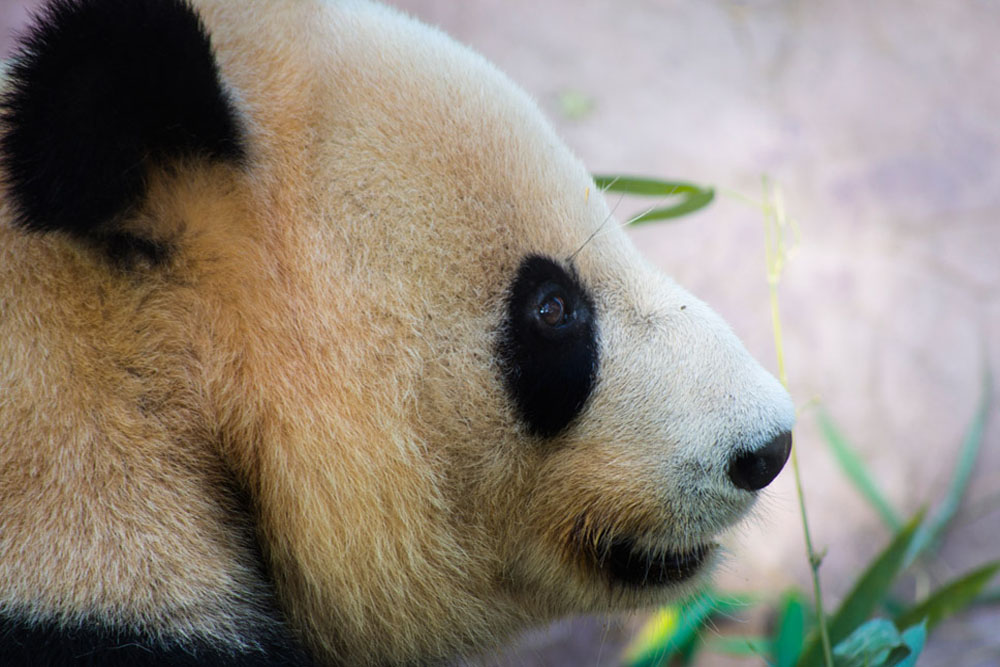
- Accommodation in Chengdu: I book all my accommodation in China through Ctrip, as well as train tickets. It’s in English and is the largest booking engine in China – you’ll find a lot more (and better value) hotels on here than the normal booking engines. My second choice for accommodation is Hotels Combined.
- Tours in Chengdu: I recommend either booking through your hotel on arrival if you’re okay to book last minute, otherwise book ahead on Get Your Guide
- Transport in Chengdu: Book your trains ahead of time via Ctrip to make sure you’re in the right place to see the Dujiangyan Panda Centre.
- Flights: Ctrip! You guessed it.
Overall Thoughts
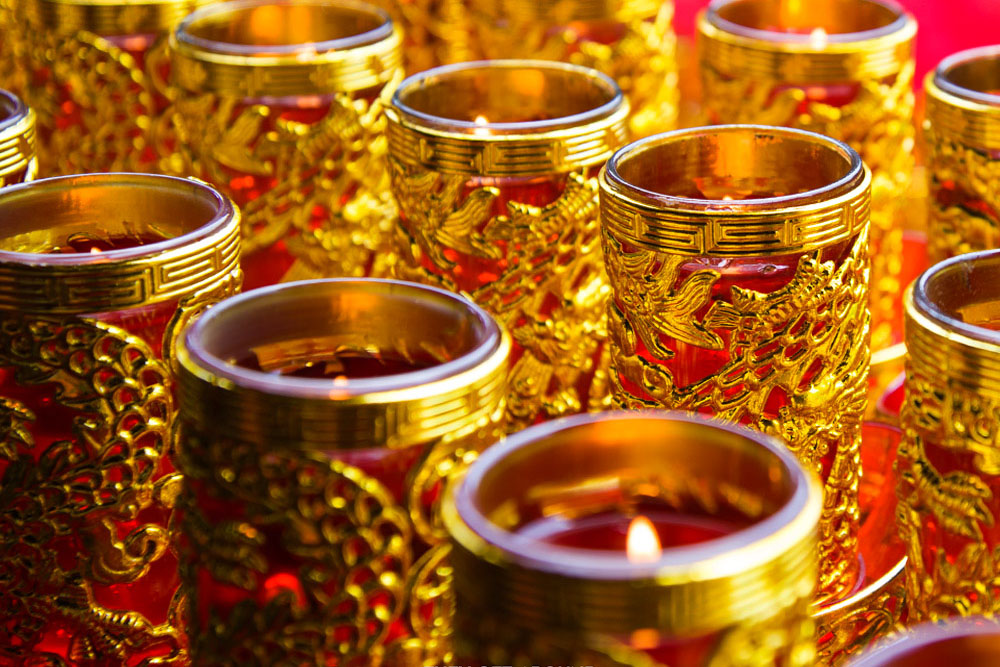
We thoroughly enjoyed the tour, pity its no longer running. The chance to see pandas was an opportunity that we couldn’t miss when in China. We’re glad chose the tour as it gave us the chance to only see these cute and cuddly, but endangered species in an artificial natural environment. However we were also able to appreciate some amazing feats which of ingenuity such as the irrigation system.
Well worth the time, and we highly recommend for people to make the trip to Chengdu and venture away from the major tourist spots of Beijing, Shanghai, and Xi’an for something a little different. It’s a great opportunity to not only see more of China, but to escape the crowds and the feeling of being a major tourist destination.